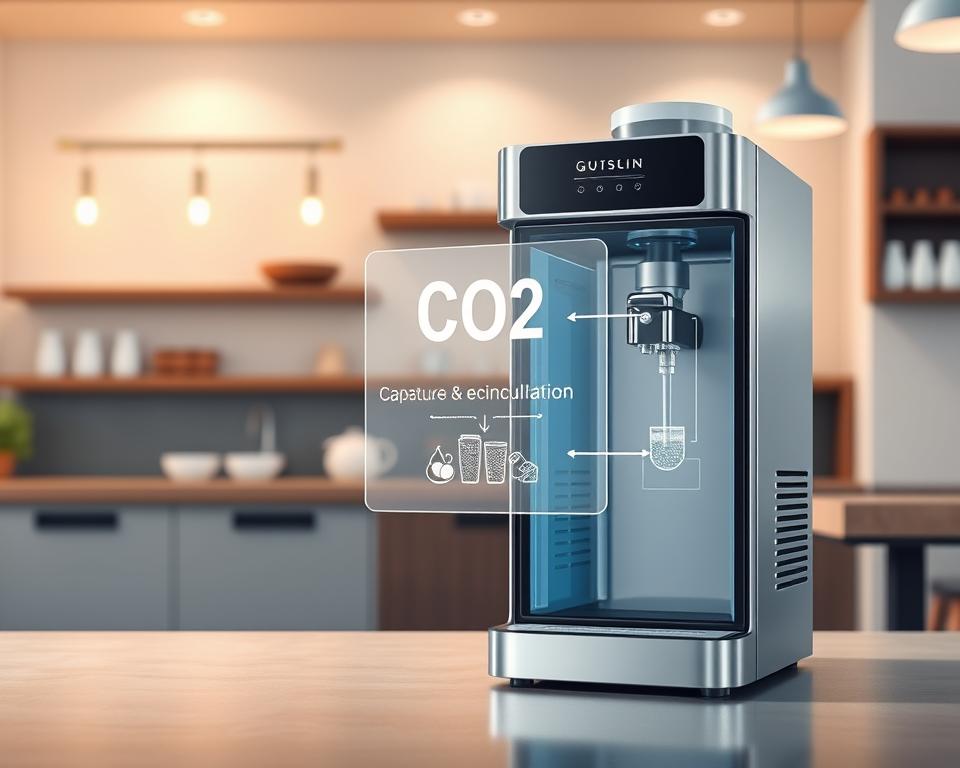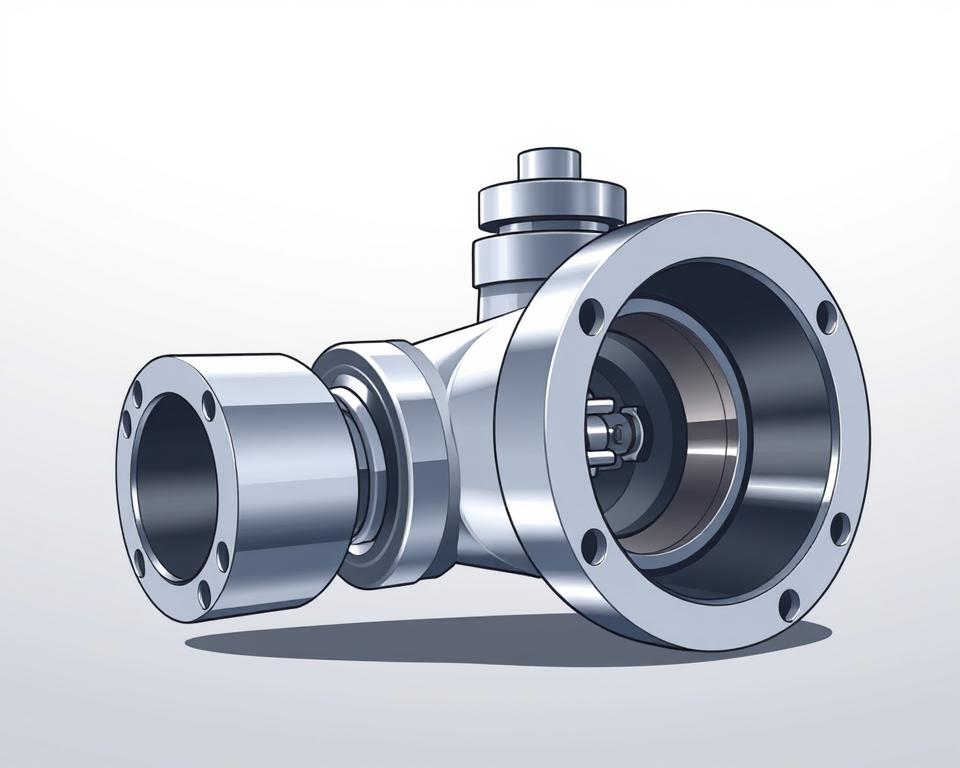Silicone Structural Sealant Manual for Constructors
Are you aware that nearly 75% of construction experts rely on silicone structural sealants for efficient weatherproof construction? These top-quality sealants are not just a fad; they have become essential in modern building projects for their outstanding longevity and strength against weather elements.
Silicone structural sealants provide strong bonding and heightened compatibility with a variety of substances. This makes them the go-to choice for constructors focused on longevity and lower upkeep. Their efficiency in multiple uses, particularly in structural joints and window sealing, shows how these building adhesives have a vital role in improving the performance and security of structures.
Introduction to Silicone Structural Sealants
Silicone framework sealants are a significant innovation in construction and building. They offer robust adhesion and flexibility, making them vital in contemporary architecture. Unlike conventional sealants, silicone sealants boast enduring elasticity. This is crucial in areas prone to shifting or expansion.
The development of structural glazing sealants has been a revolutionary. These sealants are crucial for multiple uses, both inside and outside buildings. They ensure cohesion in diverse building ventures. With a background spanning years, glass adhesive are now essential for security and aesthetics in building design.
Constructors and designers trust silicone adhesives for their performance and versatility. They are used in window sealing and bonding exterior connections, providing a dependable option for modern construction. As we explore into the types and features of silicone adhesives, it’s evident they have a vital function in construction practices.
Types of Silicone Adhesives
For builders and developers, it’s vital to comprehend the different types of silicone sealants. The main categories are neutral silicone sealant and reactive silicone sealant. Each category has distinct features that impact their use, making it essential to choose the right one for a venture.
Neutral Rubber Adhesive
Neutral silicone sealant is the go-to for delicate uses. It doesn’t emit solvents that could cause rust or damaging chemical reactions with different surfaces. This makes it ideal for structural glazing, particularly in bonding glass. Builders often select this sealant for working with alloys and other delicate materials.
Acid Rubber Adhesive
Acid rubber adhesive is perfect for ventures with robust substances. It cures fast, making it great for filling spaces quickly. It’s utilized in both residential and commercial settings where speed and durability matter. Developers value its versatility, but caution is needed when using it with substances that are sensitive to acids.
Important Attributes of Silicone Framework Adhesive
Silicone framework adhesives excel in building due to their standout features. They offer strong adhesion, strong weather resistance, and exceptional durability. These attributes are essential for builders seeking a reliable adhesive for various applications.
Bonding and Compatibility
High-quality structural adhesives adhere strongly to substrates like glass, metal, and concrete. This versatility is vital for projects needing a robust bond across various substrates. Builders appreciate this adhesive for its capacity to guarantee a strong bond, enhancing the building’s cohesion.
Weather Resistance
Engineered to endure harsh environments, weather-resistant silicone sealant stands up to UV rays, moisture, and harsh temperatures. Such resilience ensures it keeps performing well over time. It’s an ideal option for projects subjected to the elements or those in environments with changing temperatures.
Durability and Efficiency
One of silicone sealants’ defining traits is their durability. They are engineered to last, even with structural movement. This elasticity and durability make them a top pick for ventures requiring to adapt and last, ensuring steady efficiency over their duration.
| Property | Description | Advantages |
|---|---|---|
| Bonding | High adhesive capability to various substrates | Ensures building cohesion and reliability |
| Weather Resistance | Defense from ultraviolet light, moisture, and weather fluctuations | Improves longevity and avoids seal failure |
| Longevity | Capacity to endure building shifts | Provides a durable and efficient bond |
Uses for Rubber Sealant in Building
Rubber sealants are crucial in construction, especially in framework window sealing uses. They bond architectural elements like windows, exteriors, and curtain walls, ensuring both strength and aesthetics. A top-quality rubber adhesive not only creates a strong bond but also flexes with building materials, preserving the seal through natural movements.
Rubber adhesives are also key in forming waterproof shields, enhancing structures’ durability against harsh conditions. This is essential for the longevity and safety of buildings. Here are some notable fields of application:
- Joining dissimilar materials, such as panes to metal or concrete.
- Forming seals in curtain wall systems, improving energy performance.
- Offering waterproofing options for roofing and siding applications.
- Enabling growth and contraction in dynamic structures.
- Ensuring visual design consistency in different building designs.
The distinctive combination of flexibility, durability, and weather resistance makes high-performance silicone sealants perfect for contemporary building needs. As builders look for innovative options, rubber sealant is more used, resulting in more secure and better construction practices.
| Application | Explanation | Advantages |
|---|---|---|
| Framework Window Sealing | Attaching glass panels to frameworks | Enhanced appearance, robust connection, flexible movement |
| Waterproofing | Protecting roofing and siding from moisture | Waterproofing, better durability, energy performance |
| Joining Different Substances | Bonding substances like metal and glass | Versatility in substance suitability, strong adhesion |
How to Select the Appropriate Silicone Structural Sealant
Selecting the appropriate rubber framework adhesive requires a detailed analysis of substrate types and weather factors. It’s crucial to comprehend how various substances react with different adhesives. This knowledge is crucial for selecting a top-quality rubber adhesive that can endure particular pressures.
Considerations for Various Materials
When selecting rubber adhesive, different substrates demand distinct approaches. Below is a chart detailing common substrates and their corresponding considerations:
| Material Type | Recommended Sealant Type | Key Considerations |
|---|---|---|
| Concrete | Top-quality rubber adhesive | Adhesion properties and curing time |
| Glass | Neutral silicone sealant | High transparency and ultraviolet protection |
| Metal | Silicone joint sealant | Rust protection and elasticity |
| Wood | Hybrid silicone sealant | Waterproofing and elasticity |
Application Environment Factors
The surroundings significantly influences the selection of sealing agent. Conditions such as temperature extremes, moisture conditions, and chemical contact must be considered. An perfect adhesive should keep performance across varying situations.
- Temperature: Make sure the sealant can withstand the specific temperature range.
- Humidity: Choose sealants impervious to moisture for humid environments.
- Chemical Contact: If the region will be subjected to chemical substances, select a sealing agent with appropriate protection.
For the best results, always consult producer guidelines and perform suitability checks with substrates. This method reduces danger and ensures longevity for all ventures involving a rubber framework adhesive.
Correct Installation Techniques
Perfecting the skill of neutral silicone sealant application is essential for its effectiveness. The outcome depends on the completeness of surface preparation and the techniques employed. These preliminary stages set the stage for a successful adhesive application.
Surface Preparation
Substrate cleaning is the cornerstone of effective rubber framework adhesive installation. It’s imperative that substrates are thoroughly washed, dried, and devoid of any impurities. The essential steps for substrate cleaning are:
- Cleaning: Dust, oil, and residues must be eliminated. The choice of cleaner should match the material type.
- Priming: A primer may be required, based on the adhesive and material, to strengthen bonding.
- Dehydration: Complete dehydration of the surface is crucial before applying the adhesive, as moisture can undermine its performance.
Adhesive Techniques
Choosing for the right adhesive techniques is vital for superior results. The technique employed should match with the venture’s requirements and the desired finish. Common methods include:
- Sealing Tool: This technique is favored for its accuracy in regulating sealant width.
- Spatula Use: Perfect for bigger areas or when a substantial sealant layer is required.
- Backer Rod Installation: Essential in thicker gaps, this method controls sealant depth and improves adhesion.
Sticking to these application methods is vital to prevent air entrapment, which can detract from the bond’s strength. Diligence in both substrate cleaning and application guarantees a bond that is both long-lasting and efficient, supporting the long-term success of building projects.
Quality Assurance in Adhesive Application
Ensuring the quality of sealant usage is crucial for meeting performance expectations. Efficient verification techniques assist builders and developers check the cohesion of their projects. This involves thorough sealant adhesion testing under different conditions to see if the sealant bonds well with the substrates it contacts.
Bond Verification
Verifying sealant adhesion is crucial for evaluating rubber adhesives. Techniques employed involve:
- Bond strength checks – a typical method to evaluate the bond strength between the adhesive and the substrate.
- Adhesion checks – helpful for checking how well the adhesive sticks over time.
- Field tests – real-world assessments that ensure the sealant performs as expected in actual conditions.
These techniques, included in the quality assurance process, build confidence in the adhesive’s adhesive strength and its suitability for a project.
Documentation and Guarantee Factors
Recording is essential in guaranteeing adhesive standard. It involves noting the materials used, how they were installed, and the environment at the time of installation. Detailed notes help in later upkeep and safeguard all parties. Warranty considerations are crucial, offering protection against defects and defining the responsibilities of manufacturers and applicators. Sticking to recording methods lowers dangers from adhesives that don’t achieve expectations.
| Documentation Type | Explanation |
|---|---|
| Installation Records | Information on the application process, covering conditions and techniques used. |
| Material Safety Data Sheets (MSDS) | Details on the safety and handling of adhesives employed in the venture. |
| Guarantee Papers | Terms and conditions defining coverage against defects and failures. |
Keeping precise information throughout the procedure is crucial for sealant quality assurance. Effective testing and careful documentation support robust guarantee factors, leading effective outcomes.
Common Mistakes to Prevent with Rubber Adhesives
Many constructors run into issues with silicone sealants that can greatly impact their ventures. It’s essential to fix these errors for a lasting and efficient bond. Here are some common issues to be aware of:
- Incorrect Substrate Cleaning: Not cleaning and readying surfaces correctly can lead in weak adhesion. Consistently remove dust, grease, or contaminants before using the adhesive.
- Choosing the Wrong Type of Sealant: Various ventures need specific adhesives. Using an reactive rubber in a place where a neutral one is needed can result in subpar performance.
- Incorrect Adhesive Methods: Using adhesive inconsistently can create vulnerable areas. A consistent method and uniform pressure during use are crucial for a solid bond.
- Ignoring Environmental Conditions: Sealants perform optimally within certain heat and moisture levels. Using them in severe situations can lower their efficiency.
- Neglecting Curing Times: Hurrying the curing period can result in partial bonding. Always follow the recommended drying periods for the best results.
Identifying and fixing these rubber adhesive mistakes guarantees improved performance and longevity in construction projects. Taking these steps can lead successful applications and reduce the requirement for future repairs.
| Mistake | Effect | Solution |
|---|---|---|
| Incorrect Substrate Cleaning | Poor adhesion resulting in seal failure | Thoroughly clean and ready substrates before use |
| Selecting the Incorrect Adhesive | Inadequate performance in specific conditions | Choose a adhesive suitable with the application |
| Poor Application Techniques | Vulnerable areas in the seal, chance of breaks | Practice steady and uniform adhesive techniques |
| Overlooking Surrounding Factors | Weakened bond strength | Check temperature and moisture before application |
| Neglecting Curing Times | Risk of premature breaches | Follow the suggested drying periods |
Maintenance of Rubber Framework Adhesives
Guaranteeing the longevity and efficiency of silicone structural sealants is crucial. Routine maintenance can prevent mold growth, discoloration, and seal failure. This preventive method not only preserves the building’s appearance but also prolongs the sealant’s duration.
Important methods for efficient upkeep include:
- Routine Checks: Inspect for indications of damage, cracks, or swelling every few periods.
- Hygiene: Keep the area around the sealants tidy. Debris build-up can cause fungus and fading.
- Reapplication: Timely new usage is crucial when sealants indicate of deterioration to preserve integrity.
- Surrounding Factors: Consider of changing weather conditions and their effect on seal effectiveness.
Adopting these steps can significantly reduce possible issues, enhancing the building strength of buildings employing silicone-based products. This commitment to maintenance guarantees a dependable and effective adhesive for structures.
Environmental Impact of Rubber Adhesives
The environmental impact of adhesives, especially silicone sealants, has seen a increase in focus. This heightened attention stems from the requirement to match building practices with sustainability. The production of these sealants often involves chemical emissions, which contaminate the air and affect internal conditions.
As the building industry moves towards sustainable materials, manufacturers are creating in silicone sealants. They aim to lower VOC emissions and create eco-friendly formulas. These changes not only cut down on carbon emissions but also match with sustainable construction goals.
Disposal of rubber adhesives poses environmental hurdles. In contrast to some other options, silicone is hard to recycle, leading in more landfill waste. Consumers and builders should seek out products labeled as eco-friendly or backed by recycling initiatives.
| Aspect | Conventional Silicone Sealants | Sustainable Silicone Sealants |
|---|---|---|
| VOCs Emission | More pollutants | Reduced pollutants |
| Waste Management | Hard to reuse | Made for better reuse |
| Formulation | Traditional ingredients | Green ingredients |
| Adherence to Guidelines | Varies widely | Meets green building standards |
In the future, constructors and designers should prefer silicone sealants with reduced ecological effects. Choosing these sustainable choices can greatly lower harm to our environment. At the same time, they still offer the longevity and performance needed in construction projects.
Comparing Silicone Sealants to Other Adhesives
Understanding the variations between silicone structural sealant and other sealant types is essential for making educated decisions in building. This discussion will focus on two primary comparisons: rubber vs. plastic adhesives and rubber vs. synthetic adhesives. Each has distinct functions in sealing applications, determined heavily by their attributes and use cases.
Rubber vs. Plastic Adhesives
Rubber adhesives shine in elasticity and weather resistance, making them perfect for applications exposed to severe environmental conditions. Acrylic sealants, while simpler to coat and usually lower in cost, might not offer the same degree of longevity over time. Key differences include:
- Weather Resistance: Silicone is more effective in harsh weather and humidity.
- Elasticity: Silicone can stretch and shrink with structural movements, while plastic is susceptible to cracking.
- Adhesion: Silicone bonds strongly to a range of materials, whereas acrylic can be restricted.
Rubber vs. Synthetic Adhesives
In the contrast of silicone vs. polyurethane sealants, both offer great bonding. Synthetic adhesives might have a stronger connection to many surfaces but often are lacking when subjected to harsh weather. Important factors to consider include:
- Adhesion Strength: Synthetic can bond extremely effectively on various materials.
- Weather Performance: Silicone tends to outperform polyurethane in harsh weather situations.
- Use: Synthetic typically requires more precise blending and use than silicone.
Each kind of adhesive has its strengths and weaknesses, defining their fit across different projects. Creating an informed choice relies on understanding these comparisons when selecting between silicone and other adhesives.
Future Trends in Silicone Sealant Development
The rubber adhesive sector is experiencing major shifts, propelled by the requirement for contemporary building options. New developments in sealant formulations are improving longevity while reducing environmental impact. This shift is driven by growing awareness of sustainability, resulting in the development of effective, eco-friendly adhesives.
Self-healing sealants are a groundbreaking development in this area. These products can on their own fix minor damages, significantly extending their life and cutting down on replacements. This satisfies the increasing demand for long-lasting construction substances.
Constructors face the challenge of dealing with temperature fluctuations. In response, producers are creating very elastic rubber mixtures. These adhesives are engineered to endure changing weather conditions without losing efficiency. They are perfect for various building ventures.
The sector is also leaning towards eco-friendly, performance-focused adhesive options. Constructors and architects now seek products that satisfy their needs and promote green methods. This trend underscores the critical role of continuous innovation in the sector.
- Auto-repair features
- Improved elasticity for temperature variations
- Reduced environmental impact
- Efficiency-focused mixtures
Conclusion and Final Thoughts on Silicone Structural Sealant
Silicone structural sealants are essential in the construction industry, providing many advantages that boost both functionality and durability. They provide superior bonding characteristics and long-lasting bonds, enhancing project durability and strength against weather conditions.
These adhesives also exhibit notable weatherproofing and flexibility, making them suitable for a variety of uses. By employing top-quality rubber adhesives, builders not only support eco-friendly methods but also guarantee their bonds last for long periods, ensuring security and reliability.
As building evolves, the application of silicone sealants will probably lead more durable and power-saving solutions. Embracing these advancements will assist constructors provide top-notch results that meet contemporary building requirements while supporting green methods.



